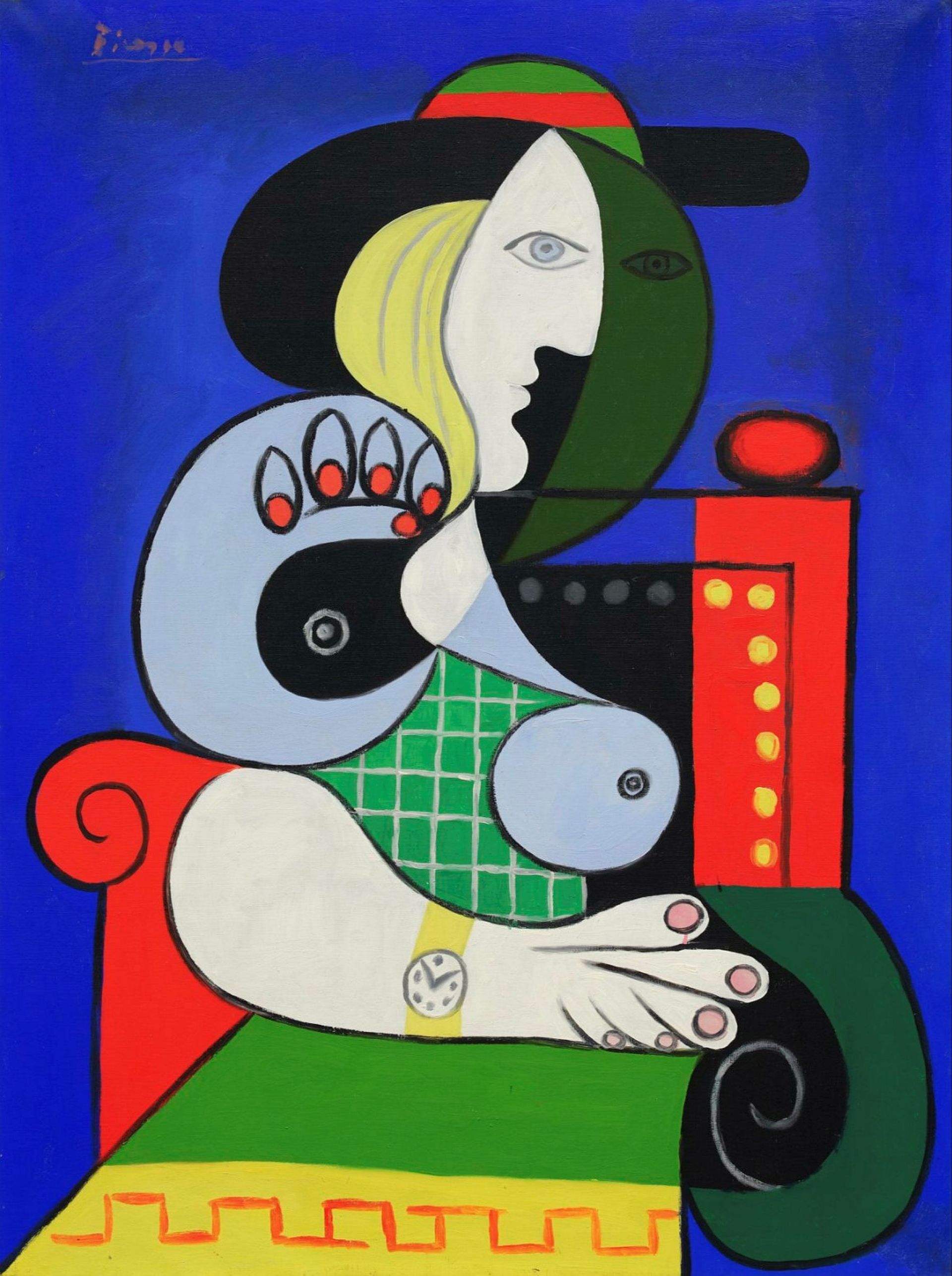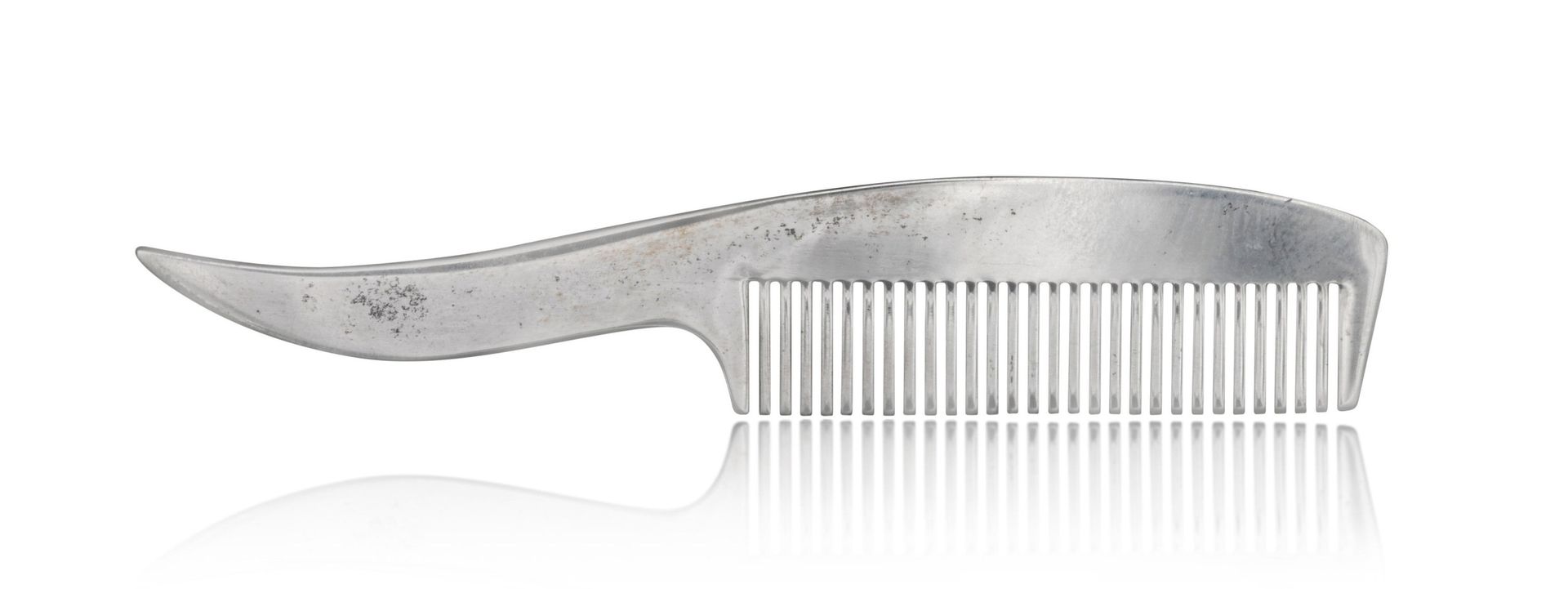
“There are no sweeping generalisations in the art market,” says Elliot McDonald, senior vice-president of international gallery Pace. In an industry made up of mostly unique items, his assessment rang particularly true during the patchy year of 2023.
At auction, results were flattered by a surge in luxury goods and celebrity sales as the tumultuous geopolitical backdrop and general economic malaise took their toll in other categories. For the three major auction houses — Christie’s, Sotheby’s and Phillips — whose sales rely heavily on the thin $10mn-plus market, the unsettling backdrop contributed to a combined fall of 18 per cent to $11.2bn in auction sales in the year to December 14, according to analytics business Pi-eX.
While the numbers were impacted by 2022’s whopping $1.6bn made at Christie’s New York from the estate of Microsoft co-founder Paul Allen — “a difficult act to follow”, says Pi-eX chief executive Christine Bourron — she notes that all three houses had revenue falls across nearly all geographies. According to her data, the US and France fell the most, by 27 and 24 per cent respectively, followed by the UK, down 16 per cent. Auction sales in China fell 3 per cent, making it the second biggest market in this arena in 2023, after the US. Because of the Allen sale, Christie’s had the greatest fall at auction, of 30 per cent.

The highest price of 2023 came courtesy of Sotheby’s, which sold Pablo Picasso’s “Femme à la montre” (1932) for $121mn ($139.4mn with fees), in line with expectations. It proved the only work to hammer for more than $100mn this year, though a late Gustav Klimt, “Lady with a fan” (1917-18), sold for $108.4mn once Sotheby’s fees were added in, and Christie’s reports a private sale “well above $100mn”, says its chief executive, Guillaume Cerutti.
Disappointing sales included that of the Chinese billionaire couple Liu Yiqian and Wang Wei at Sotheby’s in Hong Kong. Here, works by David Hockney, Zao Wou-Ki and Yayoi Kusama were among the unsold artists, while Amedeo Modigliani’s portrait “Paulette Jourdain” (c1919), bought for $42.8mn in 2015, sold for the equivalent of $30mn in October.
This auction was an extreme example of how single-owner and estate sales, which have provided the market’s pizzazz in recent years, are beginning to lose their shine. “There is no perfect solution,” Cerutti says, though he adds that a shift in the timing of the highest-wattage sales, to spread supply through the year, could help. “Right now, 50 per cent of our value comes from just two months,” he says.

Bucking the trend in 2023, albeit from a smaller base, was Bonhams, an auction house that specialises in a broader range of lower-priced art and which has invested heavily in its online reach in the past few years. The auction house’s revenues grew by 14 per cent to $1.1bn, with “healthy margins”, says chief executive Bruno Vinciguerra. Helping growth, he says, is the fact that “the top end of the market, which is immensely competitive, is only a small part of our business.” Bonhams therefore can avoid overambitious estimates to win consignments and limit incentives such as guarantees and other profit-sharing sweeteners.
Its variety of categories seems to chime with broadening taste. Among Bonhams’ top 10 prices in 2023 were the 18th-century bedchamber sword of Tipu Sultan (£14mn), an early 15th-century figure of Virupaksha (HK$38mn, £4.1mn) and a 2014 painting by Yoshitomo Nara (“Three Stars”, HK$36.8mn, £3.9mn). Vintage cars proved winners at Bonhams and Sotheby’s during 2023 while luxury goods, including handbags and jewellery, had their best year ever at Christie’s.
One area that Vinciguerra and others cite as increasingly popular is celebrity sales, where the owner proves more persuasive than the art — “this is the world we live in today,” he says. Bonhams’ star-studded offerings in 2023 included the personal collection of actor Roger Moore and the estate of broadcaster Barbara Walters. Sotheby’s provided the top-billing celebrity sale of the year, with its £40mn auction of 1,406 items that belonged to the late Queen frontman Freddie Mercury. The biggest gains were made for personal items, notably a silver Tiffany moustache comb, estimated at its retail price of £400-£600 and selling with Mercury added value for £152,400. Next up is the offering of 120 guitars and amps from the Dire Straits singer and songwriter Mark Knopfler (Christie’s, January 31) and, at Bonhams, costumes and props from The Crown (February 7).

The most surprising news of the year was that Endeavor, owner of Frieze, bought the Armory Show and Chicago Expo fairs. The move doubled Frieze’s events in the US, showing a commitment to this dominant region, while also pointing to the need to consolidate to find economies of scale as prices to build and run these temporary events rise. For gallery exhibitors, already stretched financially and physically, there is a difficult balance to strike between doing art fairs — which bring in about a third of their sales on average (though this is falling, according to the latest Art Basel & UBS report) — and sticking to their day-to-day business of putting on shows.
“We used to do a lot [of art fairs], some have been very good for us, but now we can’t do them all,” says gallerist Sundaram Tagore. For 2024, though, he has added the Aotearoa Art Fair in Auckland, New Zealand — acquired in March by the growing Art Assembly Group — to his roster.
Commercial galleries managed the cooler climes of 2023 by adopting seemingly opposing strategies. Smaller outfits, such as London’s Taymour Grahne and Roman Road, decided to abandon the traditional, single-venue, six-weekly exhibition programme in favour of more nomadic, advisory and pop-up businesses, while a new gallery, Akoje — co-founded by the England rugby star Maro Itoje — has adopted this model from the outset. Others, including Anat Ebgi, White Cube, Stephen Friedman, Alison Jacques and Selma Feriani, took advantage of the availability of real estate since the pandemic to grow their global footprints.

Those gallerists who report a good year of sales are aware of the fragility of the market in which they operate. “The reality we face is that certain areas do well, others don’t,” says Tagore, who marks his 25th year in business in 2024. “Our gallery has not suffered too much but you never know if we will be next.” The sweet spot for prices in the primary market seems to sit between $65,000 and $125,000: speculation has cooled below this level while the willingness of buyers to overpay in the hope of a rising tide has also lost its appeal.
The London gallerist Lyndsey Ingram finds that the key to success now is to have “a really tight, focused model, predicated on the understanding that people actually want what we are selling”. It is a far cry from the boom-period practice of creating indiscriminate desirability out of thin air.
Going into 2024, how best to represent living artists in a fragmented field looks likely to dominate the primary market. On the rise are artist agencies, which act more like sports management companies rather than as partners, who share in the upside — and sometimes downside — of their wards. It’s a nuanced change to the naked eye, but younger outfits such as London’s Guts Gallery talk of “championing instead of representing”, marking the shift in business models for the next generation of gallerists.
For the secondary market, the challenge will be how to manage the softening of the top end, which has masked problems lower down the food chain since the economic crash of 2008. Market observers note that even without any more surprise geopolitical crises, there are plenty of known distractions to come, including elections in the US, Russia, India, Germany and almost certainly the UK.
The auction houses point to the growth of new buyers this year — representing 35 per cent of clients at Christie’s, with a high proportion of millennials and Gen Z — as a source of cautious confidence going into the next season. Cerutti says: “2023 was a year of paradox. But we have made good business decisions and are well prepared for the future.”